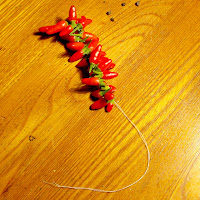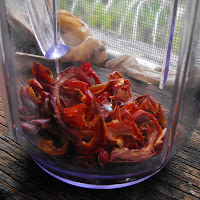It’s my amazing sister Holly’s birthday today! I made her a huge Jim Morrison painting. It turned out great; I really wanted to keep
it for myself! I think I will just have
to do another one for us… maybe with Lux Interior instead?! I basically just made a huge paper stencil
and painting on canvas.
I made my own canvas with 24” and 32” stretcher bars and
light tan canvas. You could buy a
pre-made canvas too, but it’s usually cheaper to make your own if it’s big painting.
I took an image of Jim Morrison that was easy to
recognize and decent quality so the basic details would show up in a
stencil. I used Gimp (a free, open
source photo editor) to edit my picture.
I changed it to black and white then adjusted the levels, brightness and
contrast of the photo until it was straight black and white. Gimp also has a color option called Posterize
(not sure what it’s called in Photoshop); where you can choose to only have 2
colors, black and white, in your image. With
these tools a stencil is easy.
Once I had my stencil I made the whole image the same
size as my canvas and split it into 8.5” x 11” paper sized sections. You will have to do some math for this
part. My image was going to need to be
printed on 9 pieces of paper. I made
sure to overlap where I cut my image into sections, so that I could easily
match the pieces up and wouldn’t miss any part of the image.
 I printed each section out and then cut the border of the
page off. I assembled the image together
and taped the paper with packaging tape on the front and back. It may be helpful to print the whole image
out on a separate piece of paper just so you have a model to look at.
I printed each section out and then cut the border of the
page off. I assembled the image together
and taped the paper with packaging tape on the front and back. It may be helpful to print the whole image
out on a separate piece of paper just so you have a model to look at.
(Also note that I printed my image in colors because I
was out of black ink, but I will refer to the colored sections as black and the
white as white to make it easier)
Now that you have your image, it’s time to make the
stencil. Cut the black spaces out with
an X-Acto knife and scissors. For any
floating white spaces (as in not touching other white areas) you will need to
keep a little “bridge” of black paper to keep it attached and make placement
easy. It may help to draw the “bridge”
before cutting so you don’t make a mistake, as I have done many times with
stencils!
Once all the black spaces are finally cut, pin the paper
onto your canvas. Take a permanent
marker and outline around every line of the stencil.
When you finish the overall outline you can go back
through where you made the “bridges” and as you’re unpinning, draw in where the
floating white pieces begin and end. I
drew a squiggly mark over those spots that would become black to make painting
easier.
Now just color it in!
I used black silk screen ink with paint brushes, and then added a second
coat of paint with a sponge for a smooth finish. You could use acrylic paint too, but I wanted
it to be flat and smooth like a giant silk screen. I heat set the ink with an iron, although I’m
not sure if it was necessary, but maybe it will help keep it from fading.
Such a large gift required a lot of wrapping paper, so I
taped old phone book pages together and tucked the edges under the stretcher
bars. I even found her name in the
listings and drew a heart around it as a gift tag.

























